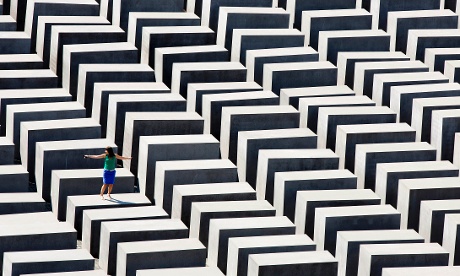This week we explored thge book based on the the authors life. So we watched a video of Imre Kertész and his actual life.
 1. Before the interview, the presenter visits a monument to the Holocaust created by the American artist Peter Eiserman. Considering the shapes, architecture and general design, in what ways do you think he represents the reality in the concentration camps?
1. Before the interview, the presenter visits a monument to the Holocaust created by the American artist Peter Eiserman. Considering the shapes, architecture and general design, in what ways do you think he represents the reality in the concentration camps?
He tries to generate some feelings in the people visiting this monument. I think that the 200 stone blocks are there to represent that everyone in concentration camps were equal and with now importance over others.
2. Which is the paradox the presenter mentions regarding Imre Kertész and the place where he lives?
3. Refer to antisemitism before and after Auschwitz according to Kertész.
Those who were anti-Semitism, after Auschwitz, wanted a new Auschwitz.
4. In what way do reminders of the past in historical books make us "much richer"?
The perspective, we receive different viewpoints and then you create your own.
5. Which metaphor does Imre use to exemplify the effect of FATELESSNESS on its readers?
He talks about we might not know what Holocaust, and he says that its locked up, and it will knock out of the cabinet.
No comments:
Post a Comment